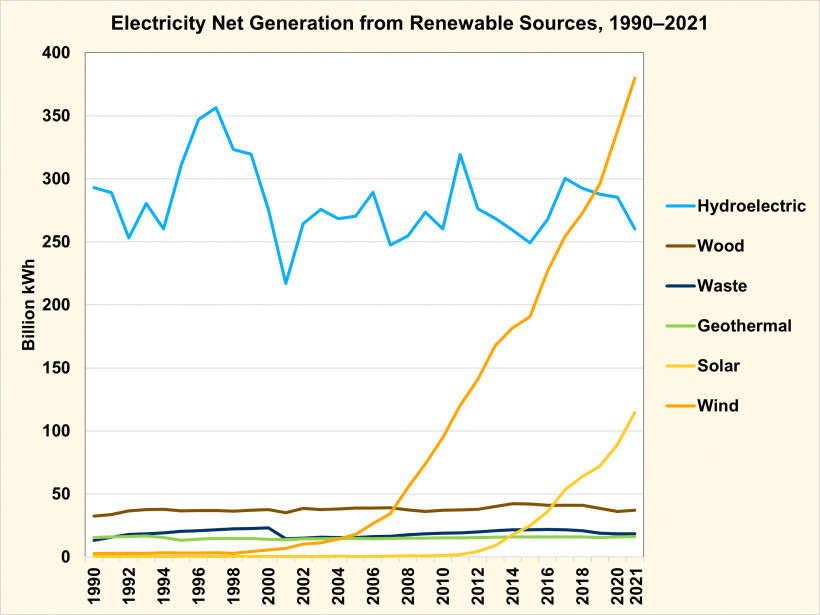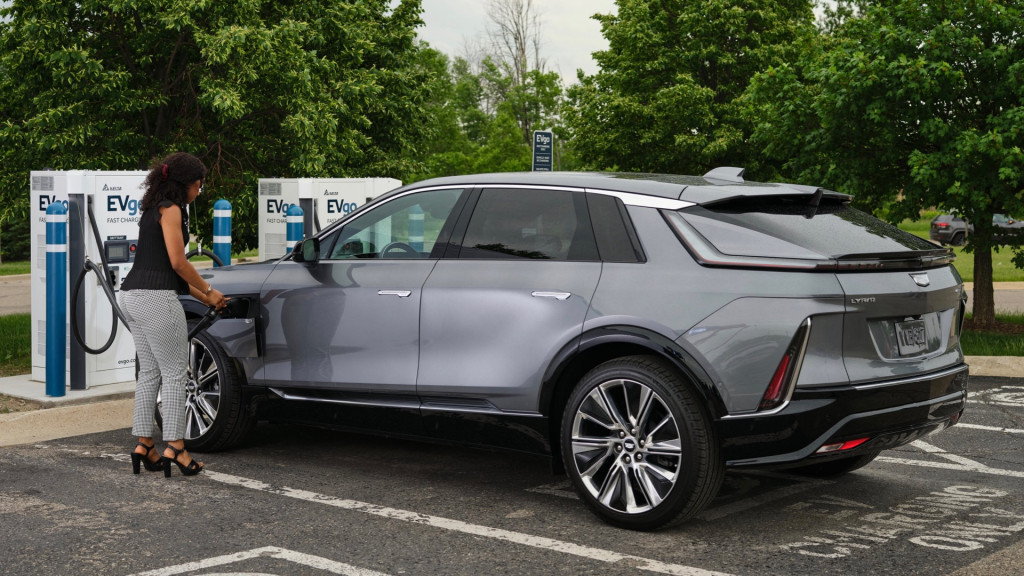Increased use of renewable energy will help reduce electricity generation from coal and natural gas power plants, according to the U.S. Energy Information Administration (EIA) in turn making EVs cleaner.
The EIA forecasts that wind and solar will together account for 16% of total electricity generation in 2023, up from 14% in 2022 and 8% in 2018, thanks to additional generating capacity scheduled to come online this year.
Wind and solar will increase their share of the national energy mix at the expense of coal and natural gas, according to the EIA. It estimates coal's share will fall from 20% in 2022 to 18% in 2023 and 17% in 2024, and natural gas will decline from 39% to 38% of electricity generation this year and 37% in 2024.

Electricity net generation from renewable sources, 1990-2021 (via U.S. EIA)
This shift toward renewable energy has been enabled by a steady buildup of wind and solar generating capacity over the past few years. The U.S. operated about 74 gigawatts of solar capacity at the end of 2022, which is about three times the capacity from the end of 2017, according to the EIA. Wind capacity has grown by more than 60% since 2017 to about 143 gigawatts, the agency said. Wind became the top renewable in 2019.
Planned expansions of solar capacity aided by tax credits and declining construction costs will add another 63 gigawatts of generating capacity by the end of 2024, with many new installations in California and Texas, where natural gas has been the primary power source. That should allow solar power's share of total electricity generation to rise from 3% in 2022 to 5% in 2023 and 6% in 2024, the EIA predicts.
Another 12 gigawatts of wind generating capacity is scheduled to come online by 2024, with the generation share holding at around 11% in 2023 and increasing to 12% the following year, the EIA said. Keep in mind that, with sources beyond wind and solar factored in, renewable energy accounted for 20% of U.S. electricity generation in 2021.

2023 Cadillac Lyriq at EVgo DC fast-charging station.
All of this will help further lower the lifetime CO2 footprint of EVs charged from the grid. As the Rocky Mountain Institute (RMI) has pointed out, EVs may also push utilities toward a broader shift toward renewables, meaning less pollution overall. A continued shift toward renewable energy could save $1.2 trillion in health costs, according to the American Lung Association (ALA).
Despite a perceived partisan divide on renewable energy, a 2021 poll found that Americans see EVs as better for the environment and want more solar, indicating at least some level of public support for keeping EV and renewable energy policy in alignment.












